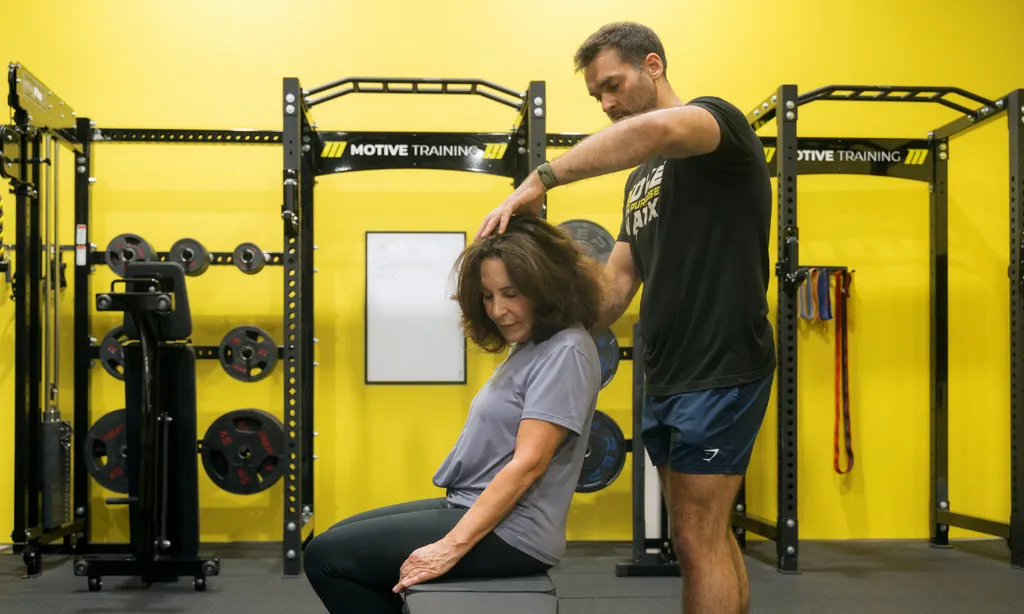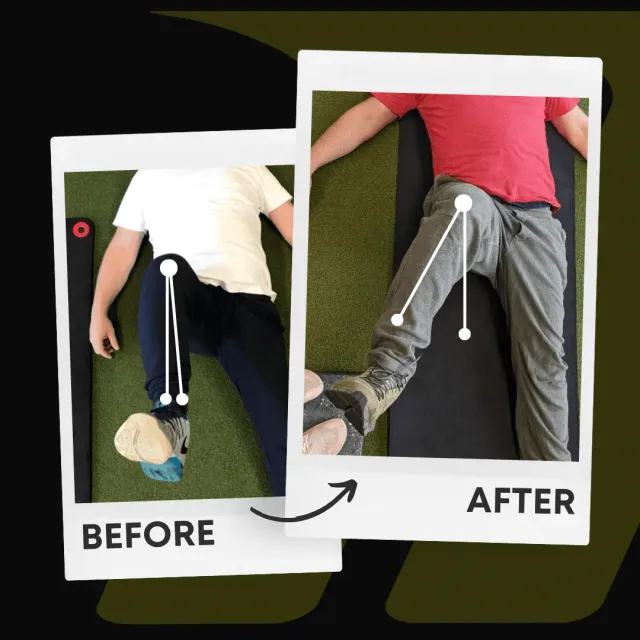Unraveling the Benefits Of Stretching: More Than Just Flexibility
July 24, 2023 | Stretching

Stretching, a simple act we often take for granted, holds immense potential to enhance our overall health, athletic performance, and longevity. This article delves into the science behind stretching, debunking myths, and revealing its unexpected benefits. Understanding the science of stretching not only empowers us to make informed decisions about our health and fitness but also makes us feel knowledgeable and in control. Participating in a regular stretching program can significantly enhance flexibility and promote mental calmness, making it essential for both seasoned athletes and beginners.
What Is Stretching?
Definition Of Stretching And Its Role In Physical Activity
Stretching, a form of physical activity, involves elongating a muscle or muscle group to its fullest length. This practice aims to improve flexibility, enhance range of motion, and alleviate muscle tightness. More than that, stretching plays a pivotal role in physical activity by preparing the muscles for exercise, boosting athletic performance, and mitigating the risk of injury. Engaging in regular stretching can significantly improve overall physical health by increasing blood flow, reducing muscle soreness, and enhancing flexibility. Whether you’re an athlete or someone looking to maintain general fitness, incorporating a stretching routine into your daily regimen can yield substantial benefits.
Brief History Of Stretching And Its Evolution
The practice of stretching dates back to ancient civilizations, where it was utilized as a form of exercise and relaxation. In the early 20th century, stretching gained popularity in the United States by introducing yoga and Pilates, emphasizing flexibility and muscle control. Over the years, stretching has evolved to encompass various techniques, including static stretching, dynamic stretching, and proprioceptive neuromuscular facilitation (PNF) stretching. Today, stretching is integral to fitness programs, sports training, and rehabilitation, reflecting its enduring importance in promoting physical well-being.
Understanding The Intricacies Of Motion: Passive Vs. Active
The body’s capability of movement can be divided into two notable categories: passive and active range of motion. The passive range is achieved through external forces without the active contribution from our muscles. This realm has long been associated with the term’ flexibility.’ It’s important to think of your passive range of motion or flexibility as your movement potential or capacity. On the other hand, active ranges are achieved through internal muscular forces orchestrated by our nervous system. Think of your active range of motion as your attainable movement, what you can actually control. This range is where we can leverage the benefits of stretching for injury prevention, enhanced performance, and long-term joint health.
On the other hand, active ranges are achieved through internal muscular forces orchestrated by our nervous system. Think of your active range of motion as your attainable movement (i.e., what you can control.) This range is where we can leverage the benefits of stretching for injury prevention, enhanced performance, and long-term joint health.
Dynamic Stretching: Benefits And Examples
When comparing static and dynamic stretching, it’s essential to understand their unique benefits and applications. Static stretches are particularly beneficial after workouts for increasing flexibility and reducing injury risk.
Types Of Stretching
Dynamic Stretching: Benefits & Examples
Dynamic stretching involves moving the joints through a full range of motion while keeping the muscles active. Mastering these techniques can give you a sense of accomplishment and confidence in your physical abilities, motivating and inspiring you to continue your stretching routine.
This type of stretching is particularly beneficial for improving flexibility, enhancing range of motion, and boosting athletic performance. More antiquated examples of dynamic stretches include leg swings, arm circles, hip rotations, and torso twists.
Often used as a warm-up before exercise or sports, dynamic stretching helps to increase muscle temperature, reduce stiffness, and prepare the muscles for physical activity. By incorporating dynamic stretching into your routine, you can effectively prime your body for more intense workouts and reduce the likelihood of injury.
At Motive Training, we use controlled articular rotations (CARs) to facilitate dynamic stretching. If you want to learn more, check out this article.
Warm-Ups: Make Them Broadly Specific
By following this structured approach, the new sections will fit seamlessly into the existing article and enrich it with additional insights and practical advice on stretching.
Functional Range Conditioning (FRC): A New Approach To Mobility and Dynamic Stretching
The realm of stretching and flexibility training has long been dominated by gym myths, with the true science often overlooked. This gap has led to the development of Functional Range Conditioning (FRC). FRC incorporates various stretching techniques to improve flexibility and reduce muscle tension. This training system combines scientific knowledge and proven training methods to improve one’s active, usable ranges of motion. FRC focuses on strengthening the nervous system’s control over the body’s movement, enhancing articular mobility, strength, resilience, and neurological control.
Myth-Busting: Stretching Misconceptions
Before delving deeper into the benefits of stretching and the FRC approach, it’s crucial to debunk some popular myths surrounding flexibility and stretching. Exercise testing plays a significant role in evaluating the effectiveness of stretching, providing evidence-based insights into its benefits.
The Real Story Behind Improvements in Flexibility: Effective Stretching Techniques
Improvements in flexibility are primarily due to changes in the central nervous system’s function, not in the structure of muscle tissue. Over time, our body allows for more range, a decision governed by the nervous system. Hence, muscle stretching is more about training the nervous system than the muscles.
Stretching and Injury Prevention: The Reality of Muscle Tightness
Despite widespread belief, pre-exercise stretching has not been scientifically proven to prevent injuries. Consulting a physical therapist can provide personalized stretching advice to ensure techniques are safe and effective. In fact, it could potentially increase the risk of injury by temporarily reducing the muscles’ ability to absorb force. However, research suggests that stretching between bouts of exercise likely reduces exercise-related injury risk.
The Downside Of Excessive Flexibility And Static Stretching
While stretching is generally beneficial, it’s important to remember that balance is key. Tight muscles can affect flexibility and contribute to back pain. Therefore, it’s crucial to maintain a balance—enough flexibility to meet the demands of one’s sport but not so much that it negatively impacts technique or disperses acting forces on the body. Understanding this balance can provide reassurance and guidance in your stretching routine, making you feel more confident and secure in your approach to stretching.
Introducing Functional Range Conditioning (FRC): Crafting Functional Flexibility

FRC is a training method that transforms passive flexibility into active, usable mobility. This method, designed to induce beneficial cellular adaptations, combines stretching and strengthening, leading to improved flexibility and the creation of ‘flexible strength.’ Stretching the hip flexors and other muscle groups is crucial for improved mobility, decreased tension, and enhanced physical performance.
The additional perks of stretching, besides improving flexibility and range of motion, include the fact that it could also lead to muscle hypertrophy, which increases muscle size and contributes to increased strength. Regular stretching may also improve results on tests of maximal voluntary contraction, jumping height, and running speed.
To summarize, stretching’s benefits extend beyond flexibility. They involve complex interactions with our nervous system, contributing to improved athletic performance, reduced injury risk, and increased muscle strength. While stretching is beneficial, finding the right balance and avoiding excessive flexibility that could compromise athletic performance is essential.
So, don’t take stretching for granted. Learn how to leverage stretching to help you move and feel better than you ever thought possible.
References
-
Magnusson SP, Simonsen EB, Aagaard P, Kjaer M. Biomechanical responses to repeated stretches in human hamstring muscle in vivo. Am J Sports Med 1996;24:622-628.
-
Halbertsma JPK, Goeken LNH. Stretching exercises: effect on passive extensibility and stiffness in short hamstrings of healthy subjects. Arch Phys Med Rehabil 1994;75:976-981.
-
Shrier I. Does stretching improve performance? A systematic and critical review of the literature. Clin J Sport Med 2004;14:267-273.
-
Weldon SM, Hill RH. The efficacy of stretching for prevention of exercise-related injury: a systematic review of the literature. Man Ther 2003;8:141-150.
-
Amako M, Oda T, Masuoka K, Yokoi H, Campisi P. Effect of static stretching on prevention of injuries for military recruits. Mil Med 2003;168:442-446.
Written by

Motive Training Staff
We’ll teach you how to move with purpose so you can lead a healthy, strong, and pain-free life. Our headquarters are in Austin, TX, but you can work with us online by signing up for KINSTRETCH Online or digging deep into one of our Motive Mobility Blueprints.




